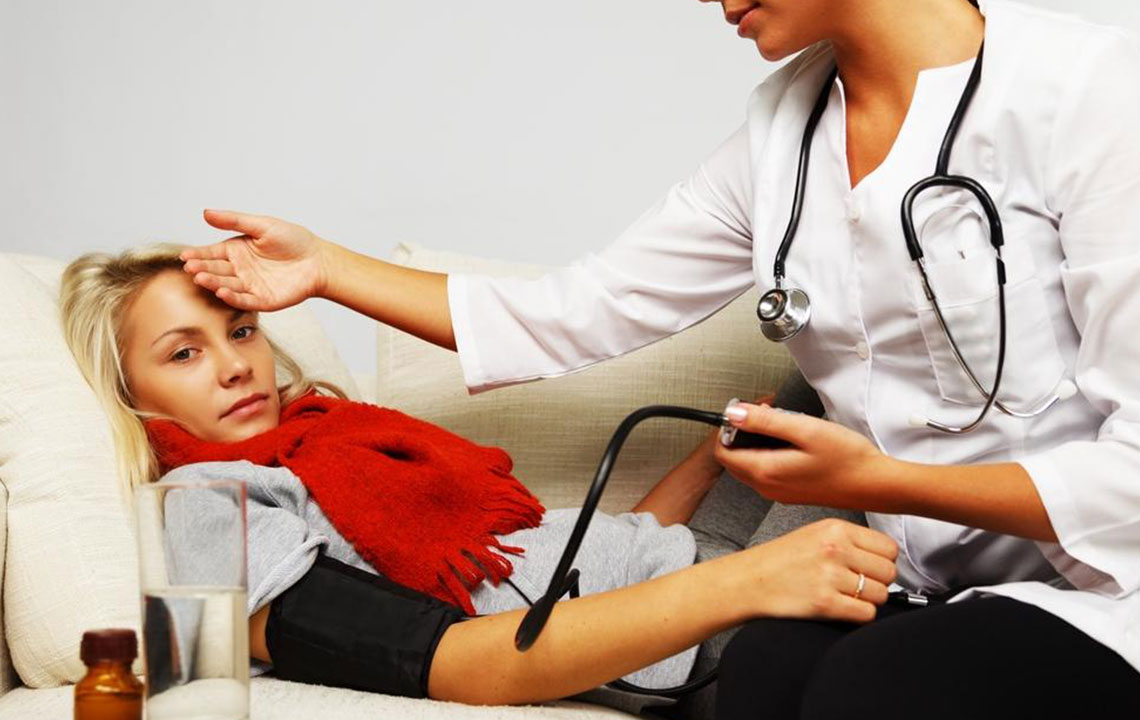Pneumonia: Causes, symptoms, and treatment
The increasing pollution of the environment is causing an increase in the number of people who are getting affected with lung disease, and pneumonia is the most common of them all. There are a lot of factors that cause pneumonia, but the most common causal factors are the different types of pathogens like bacteria, fungi or viruses. It is important to know about pneumonia, its causes, symptoms, and treatments because anyone of us can get affected by it.

Read further to find out more about pneumonia.
What is pneumonia?
Pneumonia is a condition where the air sacs in your lungs, called alveoli, swell up and hinder your breathing. The affected air sacs can either be filled with pus or fluid. The most common pathogen that causes this disease is a species of bacteria called Streptococcus pneumoniae.
Types of pneumonia (Based on pathogen)
Based on the pathogen that causes the infection, there are different kinds of pneumonia. They are listed down below:
Bacterial pneumonia: Streptococcus pneumoniae most commonly causes this type of pneumonia, but there are also other bacterias like Chlamydophila pneumoniae and Legionella pneumophila that cause this too.
Viral pneumonia: Most often, respiratory viruses are the ones that cause this kind of infection, especially in children and older adults. This type is not as severe as the bacterial infection and also lasts for a shorter period.
Mycoplasma pneumonia : Although either bacteria or virus don’t cause this sort of infection, it depicts the symptoms related to both the infections. Mycoplasma Pneumonia is a mild case of pneumonia which is common in young adults and older children.
Fungal pneumonia: Sometimes the fungi from bird droppings or soil can also cause pneumonia which is a result of valley fever caused by Coccidioides fungus. It can also cause the disease in people with chronic diseases and weak immune systems.
Types of pneumonia (Based on location of the disease acquired)
Hospital-acquired pneumonia (HAP): This is a type of bacterial pneumonia which is acquired when a person who is admitted to a hospital for some other disease, ends up getting affected with pneumonia. Most HAPs patients are infected when they come in contact with ventilators that have been used by pneumonia patients previously.
Community-acquired pneumonia (CAP): This disease is caught outside a medical institution and is more common compared to HAPs. A lot more people are affected with pneumonia during the winter than in any other season.
How contagious is pneumonia?
Most times pneumonia isn’t highly contagious. Even though it sometimes spreads from person to person, the disease affects a higher number of individuals with a lowered immunity.
But there are some types of pneumonia which are highly contagious, Tuberculosis and Mycoplasma pneumoniae to name a few. They spread through infected droplets from the victim’s cough or sneeze.
The period through which pneumonia is contagious can’t be determined with certainty because it is caused by several different types of pathogens and varies with each type of pneumonia. However, on an average, it ranges from two days to several weeks and is transferred through the infected droplets when a pneumonia patient coughs or sneezes.
When antibiotics are given to the victim within 24 to 48 hours, most bacterial cases of pneumonia are a lot less contagious. But this period varies for different types of organisms. Most viral cases of pneumonia only become less contagious after the symptoms improve, especially fever.
Symptoms of pneumonia
Several signs indicate that a person has been affected by the disease. Some of these are:
- Incessant coughing that is usually accompanied with phlegm or mucus.
- Fever, chills, and sweating
- Pain in the chest
- Shortness of breath
There are also some other symptoms that vary with the age or the general health of a person or even by the severity of the infection.
Symptoms by pathogen
- Viral pneumonia includes flu-like symptoms at the beginning like wheezing and coughing. 12 to 36 hours after the infection, the victim can also experience a high fever.
- Bacterial pneumonia, on the other hand, causes a high fever of up to 40.5℃ characterized by bluish nails and lips, profuse sweating and confusion.
Symptoms by age
- Infants may suffer from vomiting, lack of energy, and difficulty in drinking or eating.
- Children under the age of 5 may experience fast breathing.
- Older people experience their body temperature to be higher than normal.
Treatment for pneumonia
The treatment for this disease depends on the severity of the infection. Down below are some methods of treatments.
Bacterial pneumonia: This type is treated with antibiotics as they’re the most effective solutions against bacterial infections.
Viral pneumonia: Most viral infections are treated with ample rest and consumption of fluids. Some antiviral medication may also be provided.
Fungal pneumonia: This type of infection can be cured with medication against fungal infections.
Now that you’re aware of all the symptoms and causes, it is necessary that you take care of yourself to avoid becoming a victim of such a deadly disease, especially during winters. There are also vaccines available for them so make sure to learn about pneumonia vaccinations from your doctor.















